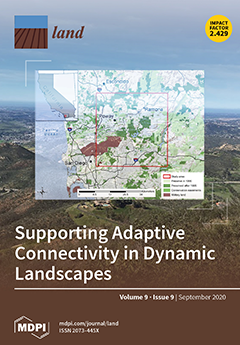Open AccessEditor’s ChoiceArticle
Local Perceptions of Ecosystem Services Across Multiple Ecosystem Types in Spain
by
Marina García-Llorente, Antonio J. Castro, Cristina Quintas-Soriano, Elisa Oteros-Rozas, Irene Iniesta-Arandia, José A. González, David García del Amo, Marta Hernández-Arroyo, Izaskun Casado-Arzuaga, Ignacio Palomo, Erik Gómez-Baggethun, Miren Onaindia, Carlos Montes and Berta Martín-López
Cited by 21 | Viewed by 6126
Abstract
Combining socio-cultural valuations of ecosystem services with ecological and monetary assessments is critical to informing decision making with an integrative and multi-pronged approach. This study examined differences in the perceptions of ecosystem service supply and diversity across eight major ecosystem types in Spain
[...] Read more.
Combining socio-cultural valuations of ecosystem services with ecological and monetary assessments is critical to informing decision making with an integrative and multi-pronged approach. This study examined differences in the perceptions of ecosystem service supply and diversity across eight major ecosystem types in Spain and scrutinized the social and ecological factors shaping these perceptions. First, we implemented 1932 face-to-face questionnaires among local inhabitants to assess perceptions of ecosystem service supply. Second, we created an ecosystem service diversity index to measure the perceived diversity of services considering agroecosystems, Mediterranean mountains, arid systems, two aquatic continental systems, coastal ecosystems and two urban ecosystems. Finally, we examined the influence of biophysical, socio-demographic and institutional factors in shaping ecosystem service perceptions. Overall, cultural services were the most widely perceived, followed by provisioning and regulating services. Provisioning services were most strongly associated with agroecosystems, mountains and coastal systems, whereas cultural services were associated with urban ecosystems and regulating services were specifically linked with agroecosystems, mountains and urban recreational areas. The highest service diversity index values corresponded to agroecosystems, mountains and wetlands. Our results also showed that socio-demographic factors, such as place of origin (urban vs. rural) and educational level, as well as institutional factors, such as management and access regimes, shaped the perception of ecosystem services.
Full article
►▼
Show Figures





